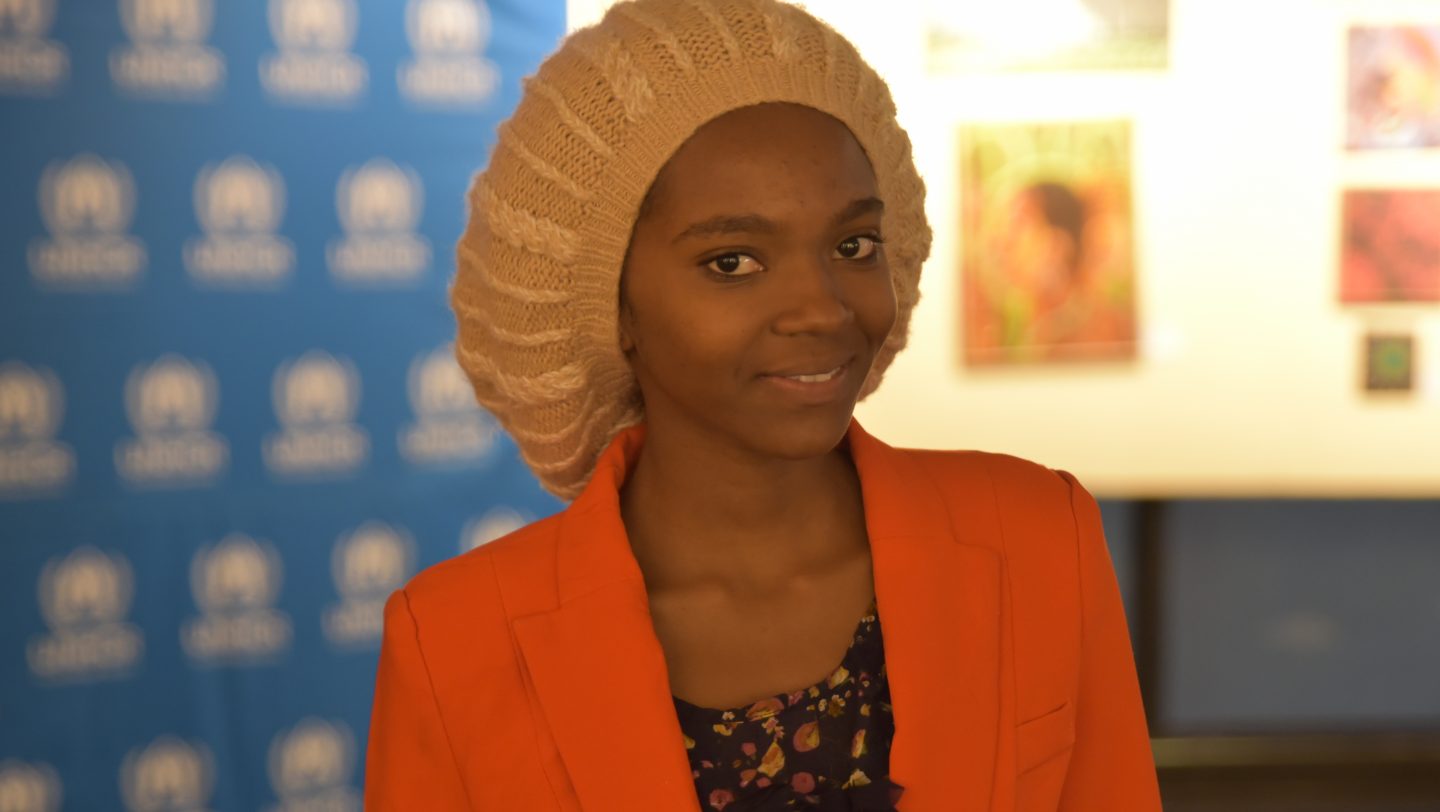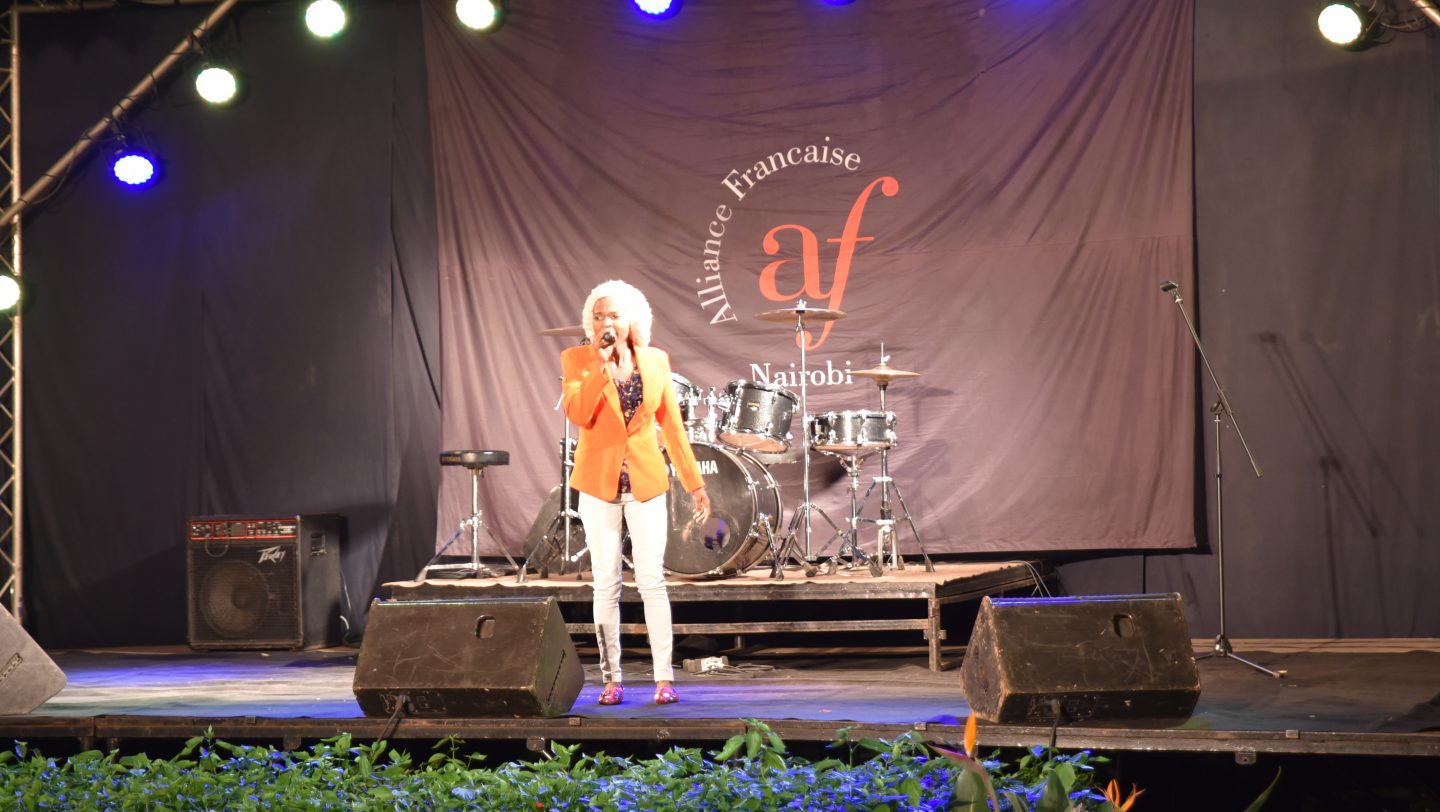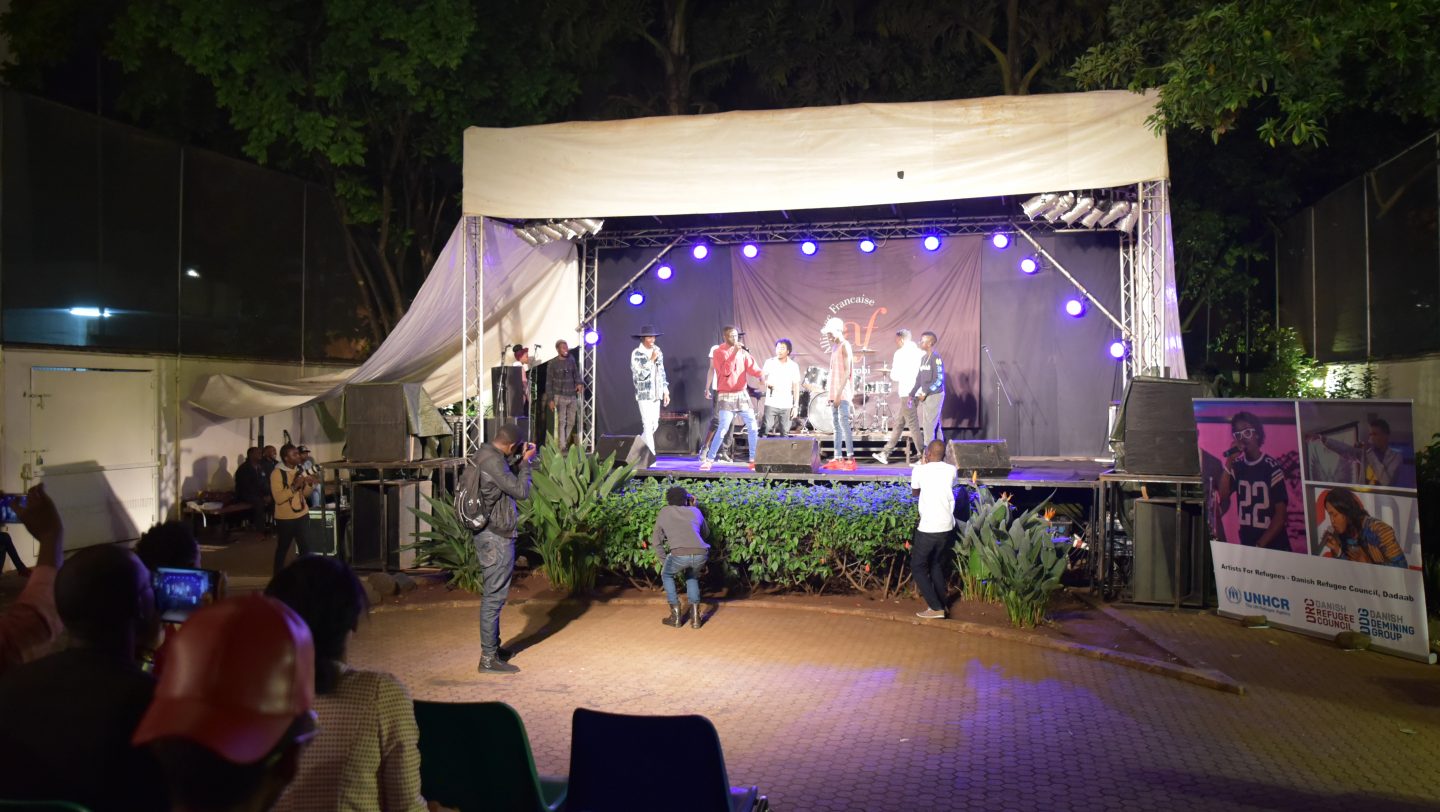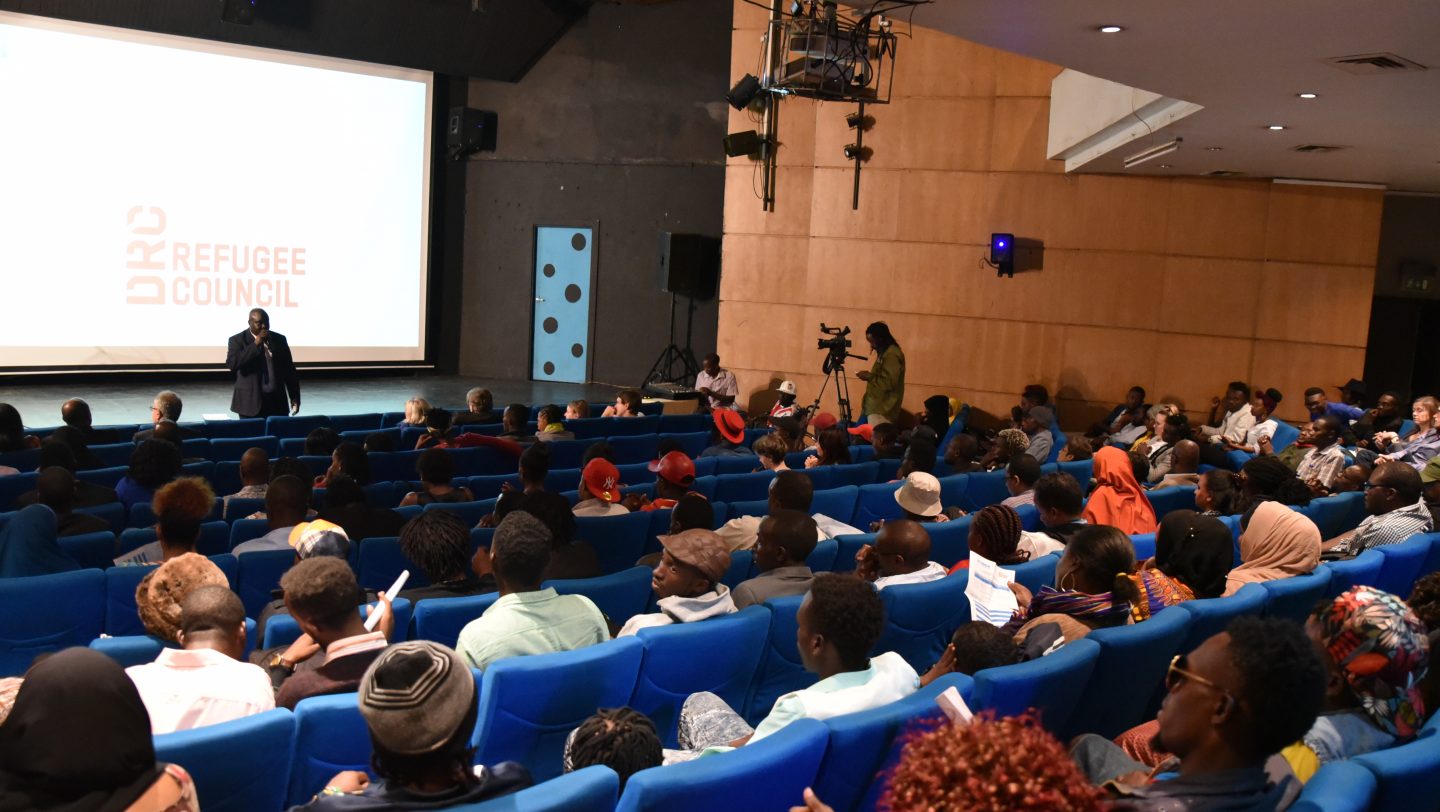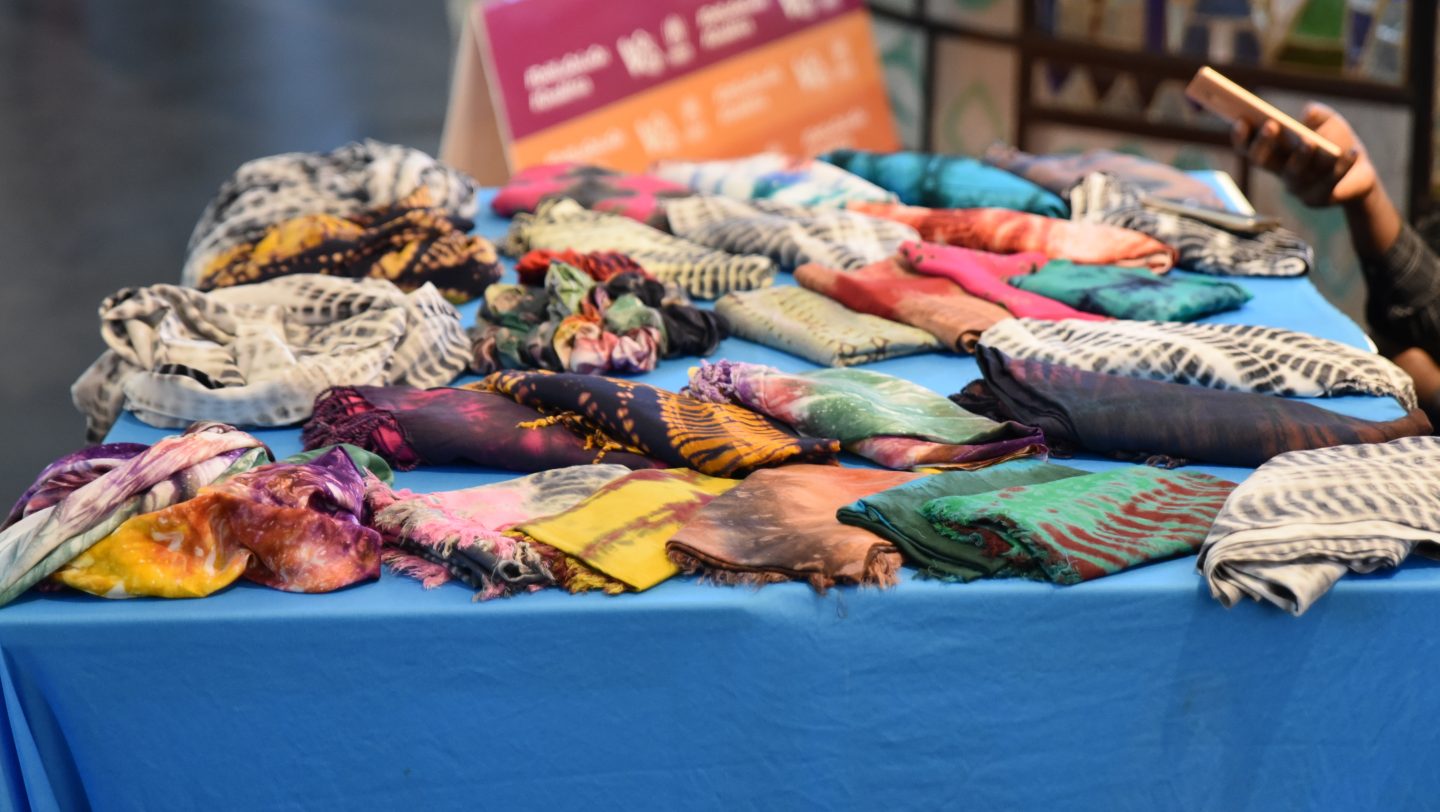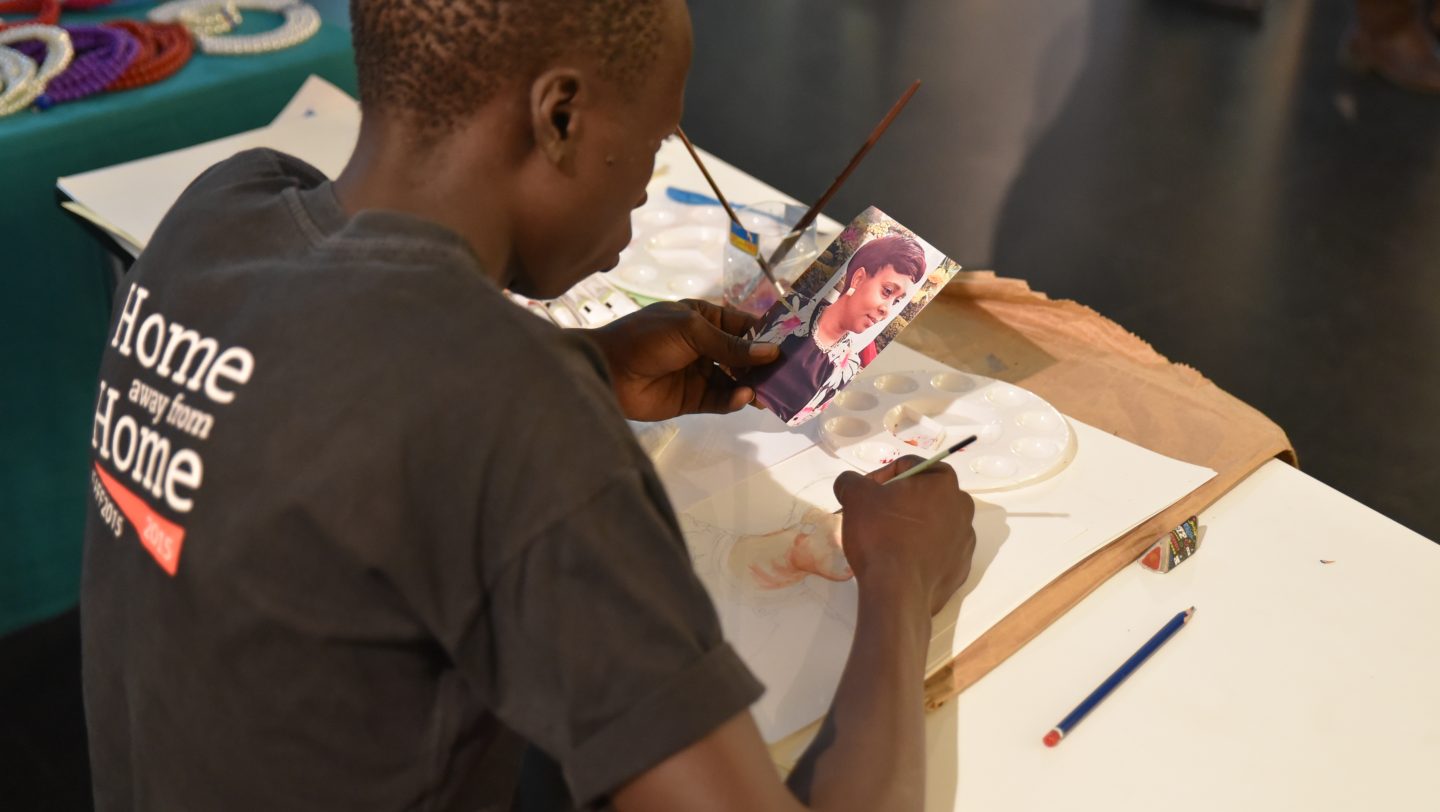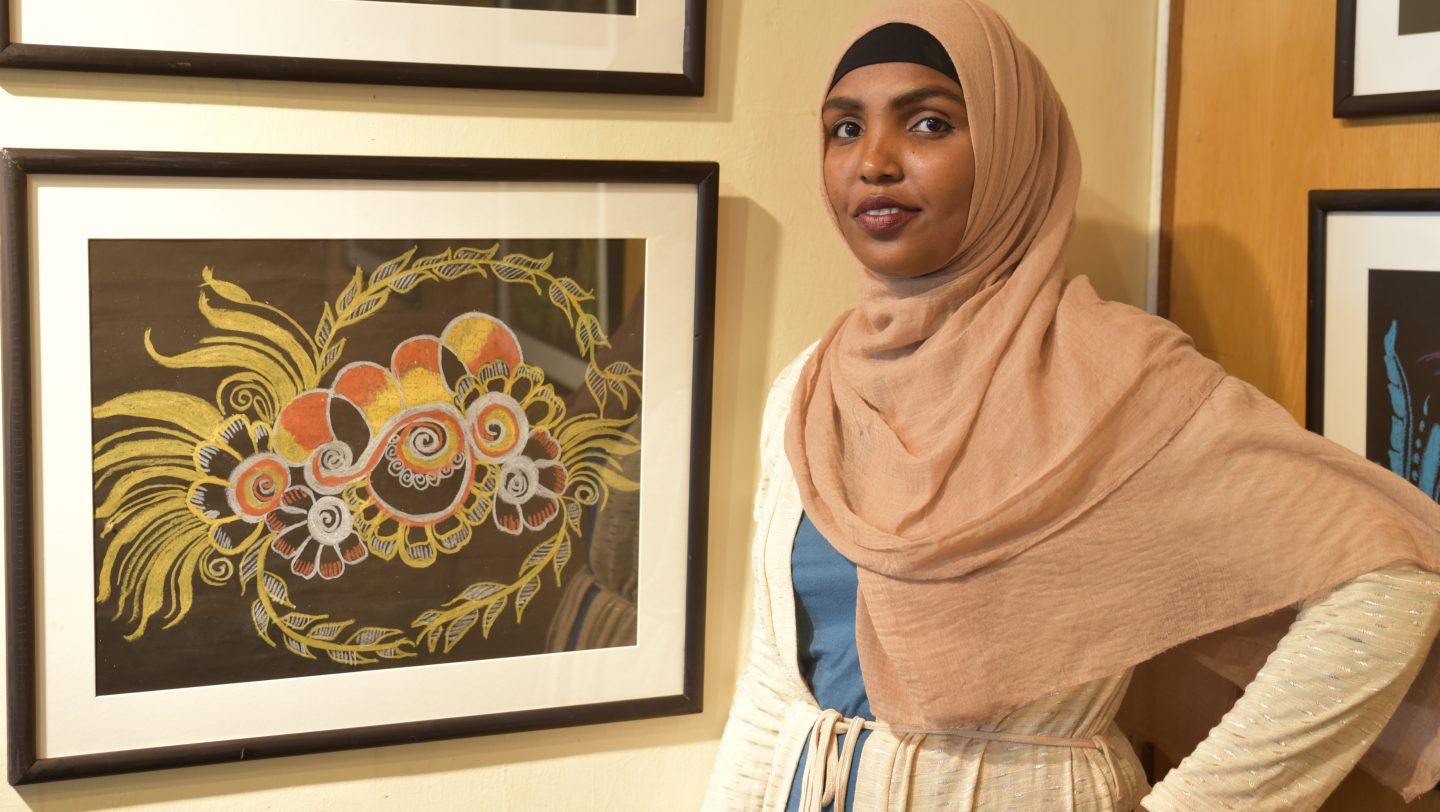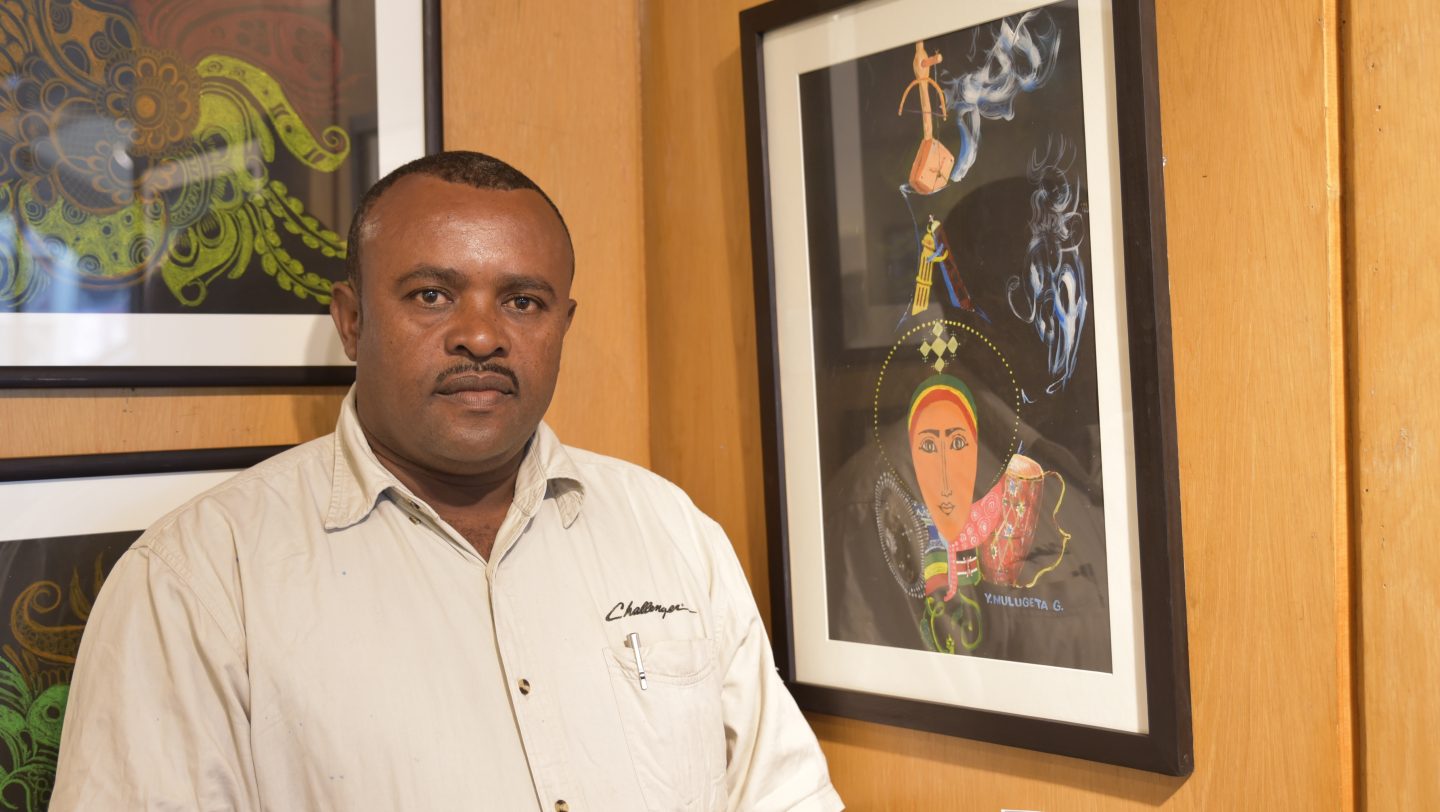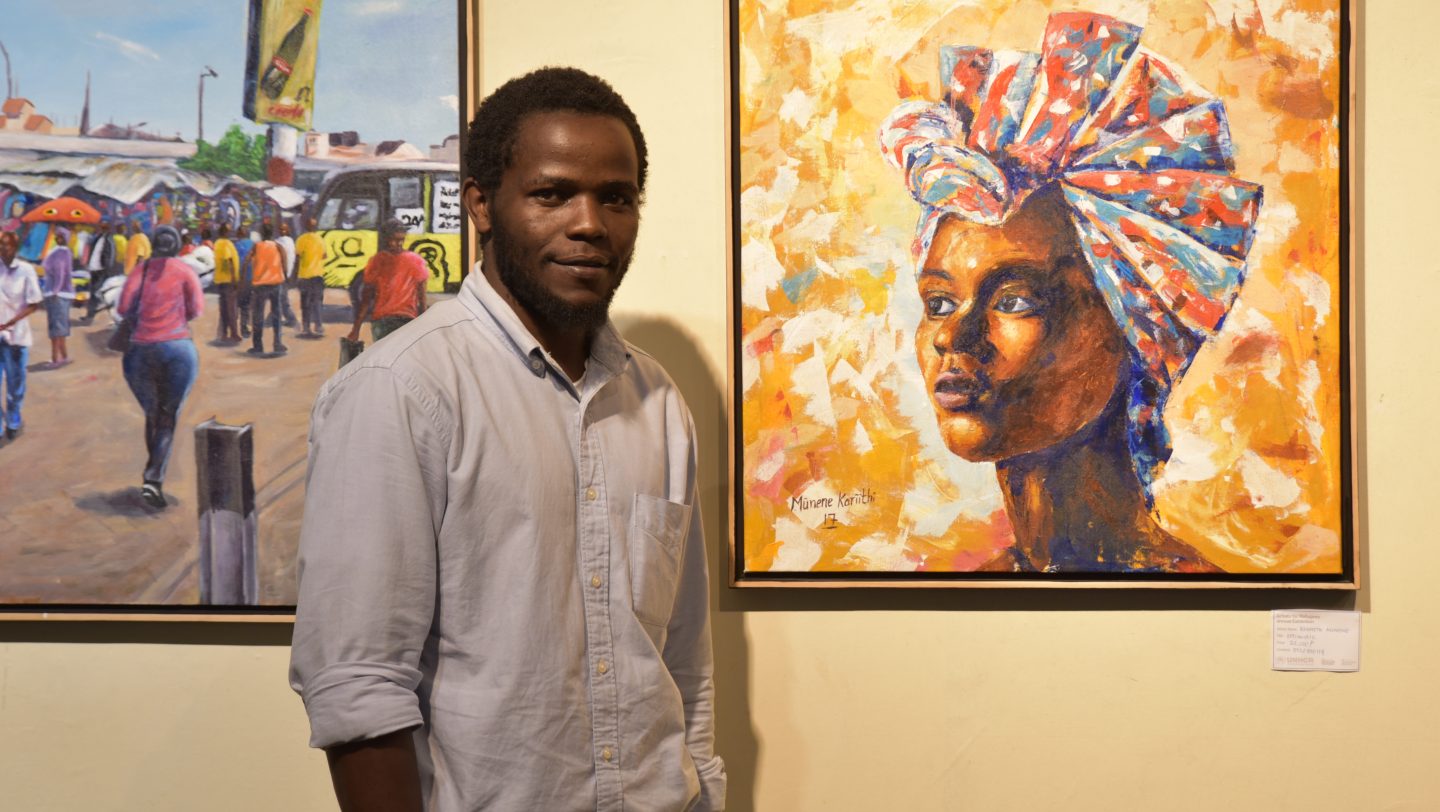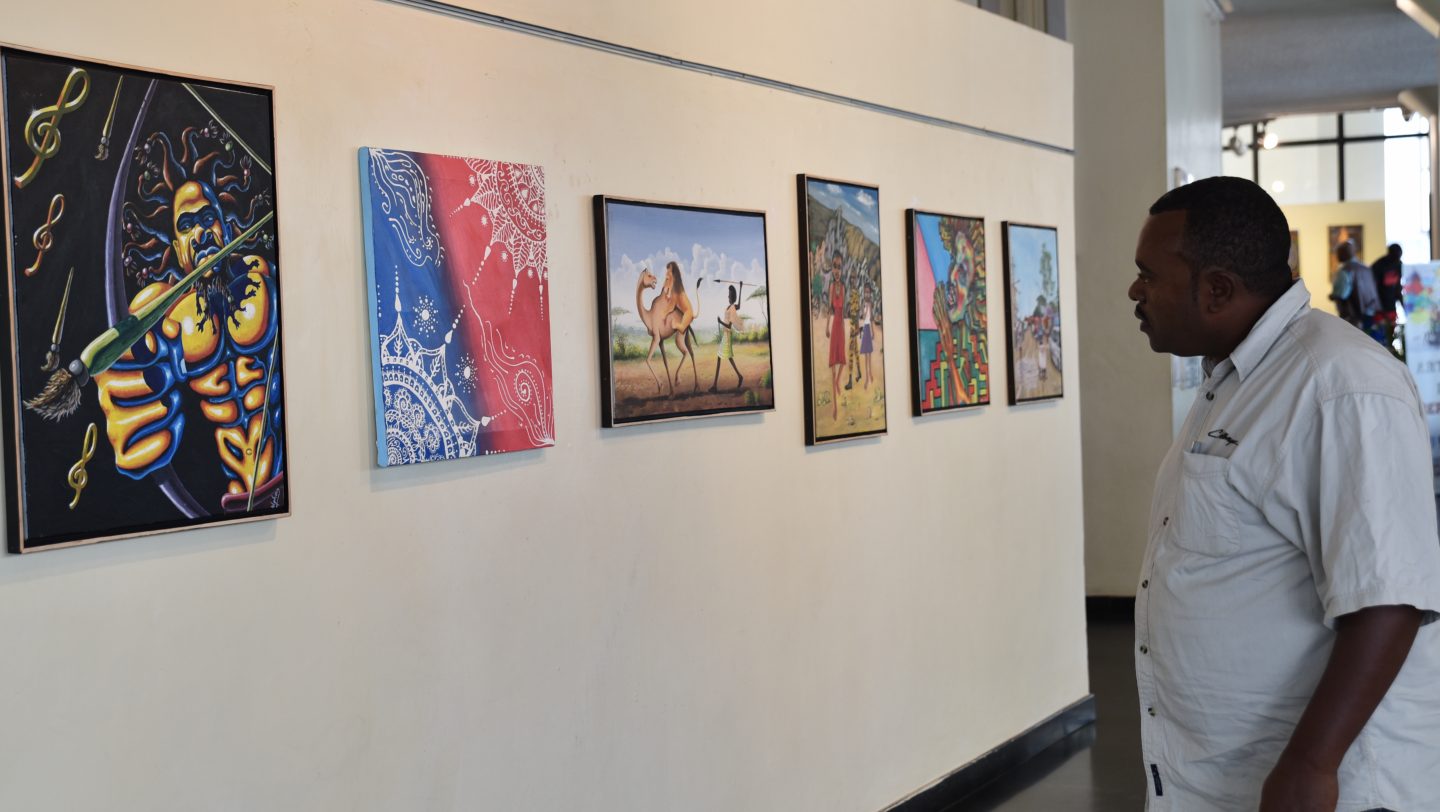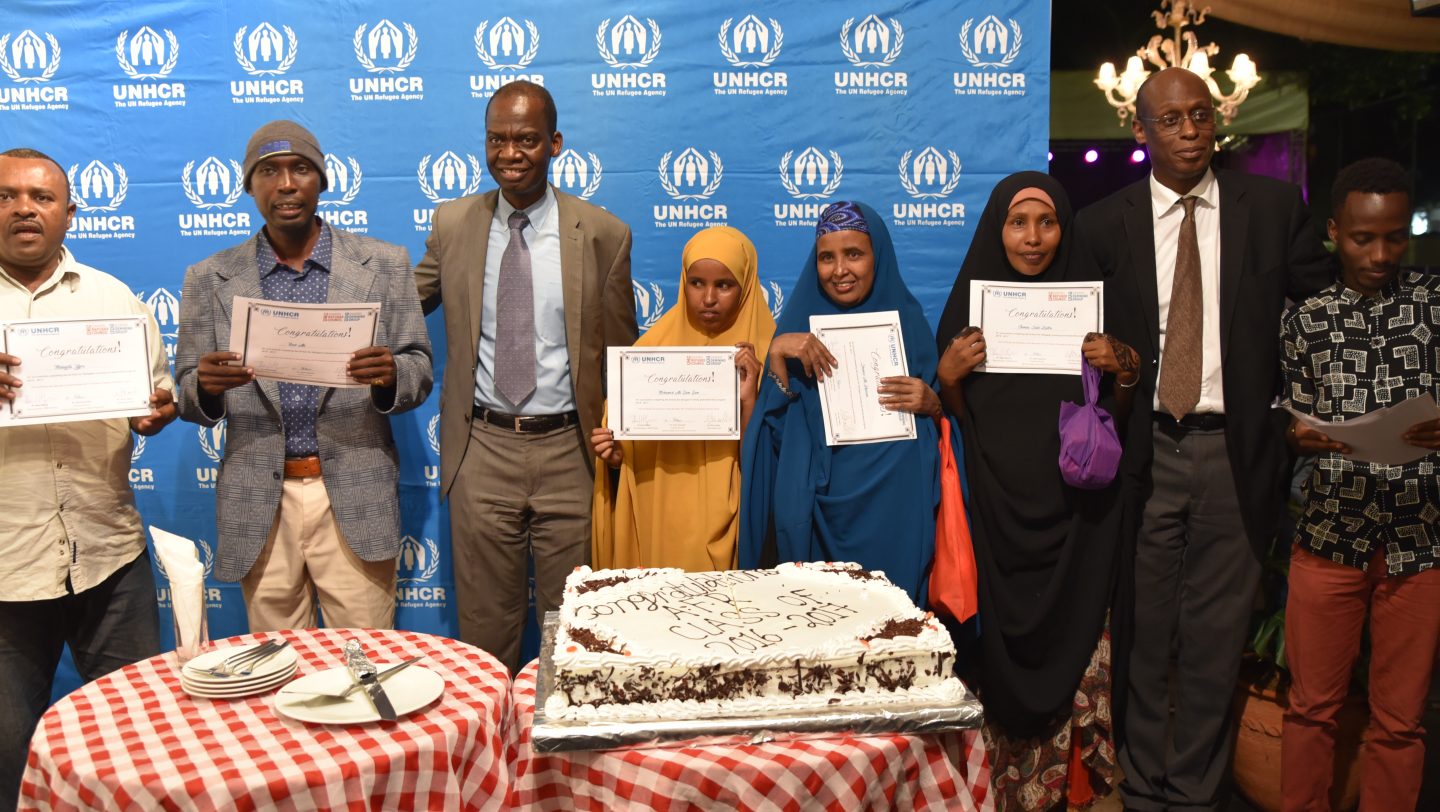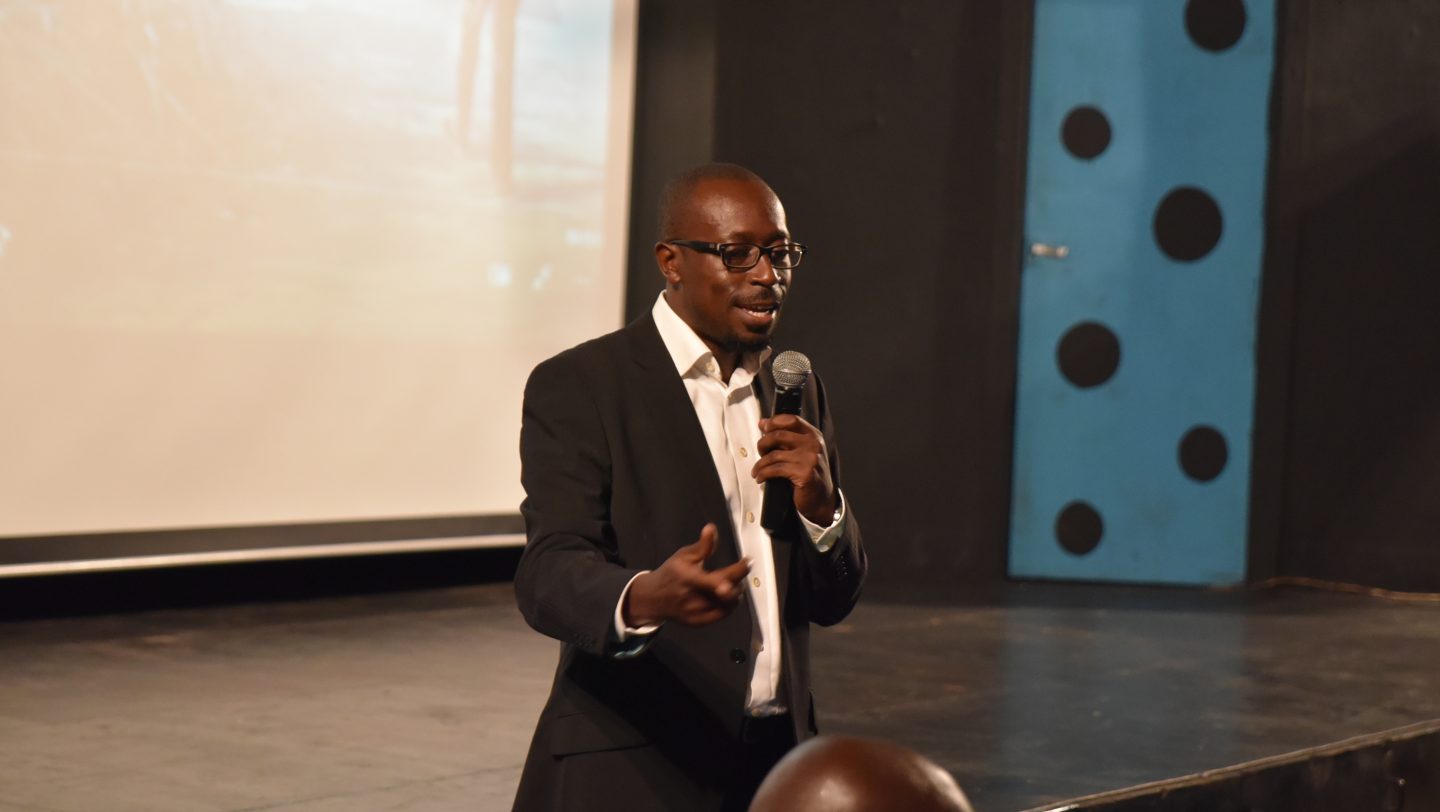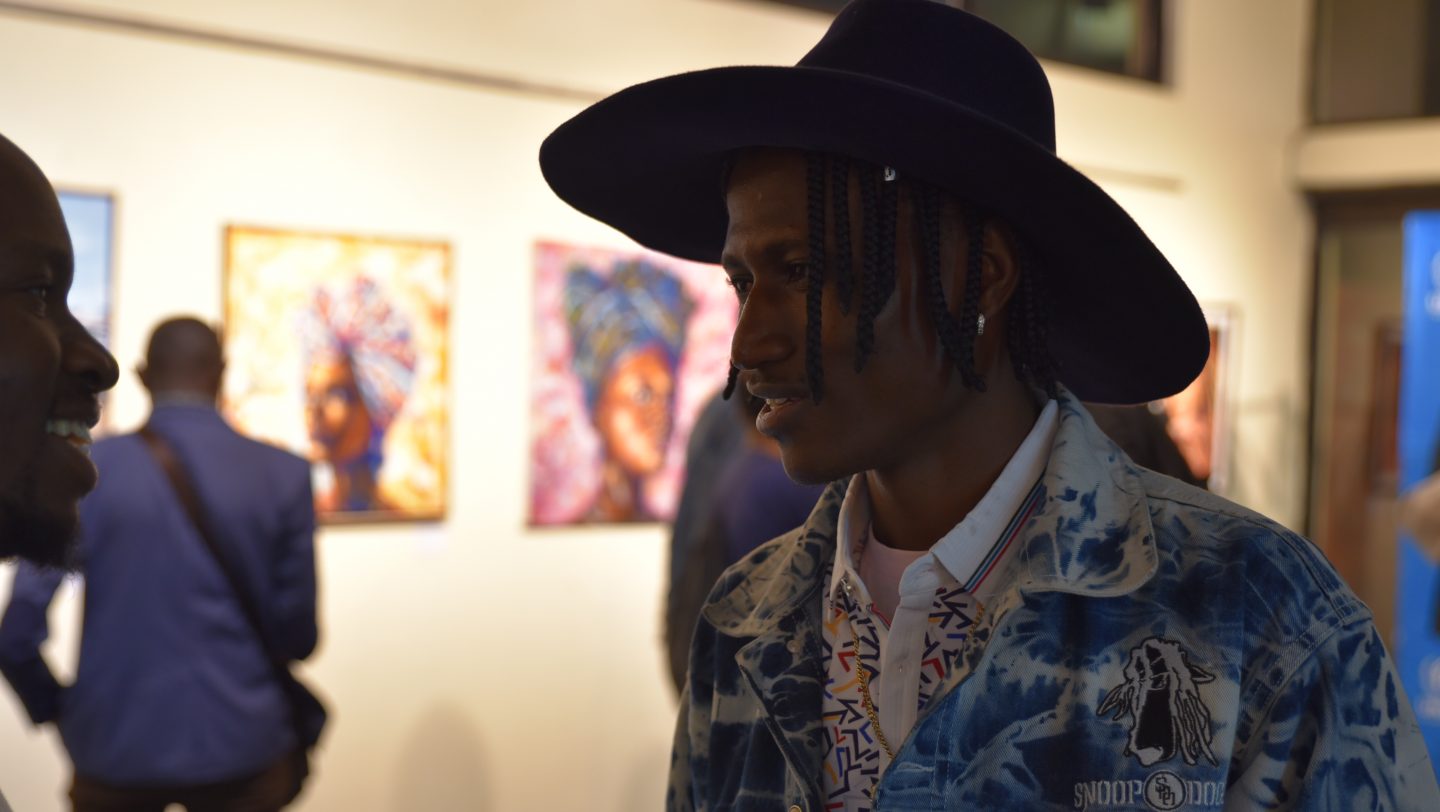Refugee Artists in Kenya celebrate 3rd year of self-reliance-driven music and arts project
“One of the most important expressions of human beings is through art. For the past three years we have seen better quality of work from both the visual artists and musicians.”

Flora stands next to her pieces during the opening gala marking the third year of UNHCR's Artists for Refugees livelihood project UNHCR/M.Ndubi
More than 400 musicians and artists have been trained since the projected started in 2015.
When Anuna Doreen fled war in South Sudan for Dadaab Refugee camp in Kenya in 2015, she did not know what the future would hold for her and her family. But she says her life was transformed when she got involved with the Artists for Refugees project in Dadaab, run by UNHCR, the UN Refugee Agency in Kenya, and the Danish Refugee Council.
The project aims to nurture and develop musical and artistic talent among refugees and asylum seekers in Kenya. So Anuna was thrilled to take part in celebrations to mark the 3rd year of the project, which were celebrated at Alliance Française in the Kenyan capital, Nairobi on Wednesday.
The shy and calm 17 year old, who started singing when she was 7, and goes by the stage name of Anulet, was among the 40 refugee musicians from Dadaab who performed in front of a live audience of refugees, Kenyans, donors, and staff from NGOs.
More than 7000 albums have been sold by artists on the project, and more than 100 pieces of art sold since 2015.
Anuna enrolled for the Artists for Refugees project earlier this year. She was among the 195 refugee artists who received training for music and arts across refugee camps in Kenya.
“I love music so much. I just wanted to do something to do with music, so it’s wonderful to be here to celebrate. The Artist for Refugee training was very vigorous, but has enabled me to grow as artist. I have learnt a lot about music, how to connect with people when performing, how to market my music and how to stage a performance.” She says.
Ismahan Hussein, aged 36, a visual artist taking part in the project, who was part of the celebration praised the merits of the project too. A refugee from Somalia she enrolled in the project in 2015 to try and develop her talent for henna painting. Ismahan was one of 30 visual artists, painters and sculptors trained in Kakuma Refugee camp. She says the project helped her develop new skills in henna design and have vastly improved her designs, and earned her an income.
“The Artist for Refugee training was very vigorous, but has enabled me to grow as artist.”
Mulugeta Yifru arrived in Dadaab in 2003, all alone, from Ethiopia and is another older recipient of Artists for Refugees. He had been forced to flee because of insecurity. Over 30 at the time he had lost hope of using his talents to make a living.
“I was idle when I got to Kenya. For 12 years I forgot about painting and started doing construction work in Dadaab. But in 2015 I joined the project and my talent has been sharpened ever since.” He explained while standing next to his painting ‘Peace and Harmony’.
“As a result of the training, I have improved and I am now getting a lot of business in Dadaab from agencies who work there. People even come to my house and order for photos and family portraits. It has provided me a real income.”
“The talent among refugees in the 2017 intake has been impressive.”
More than 400 refugees have been part of Artists for Refugees, and many have been able to use what they have learned to develop a sustainable income and livelihood from their musical and artistic talents. More than 7000 albums have been sold by artists on the project, and more than 100 pieces of art sold since 2015.
Many of the refugee who have been part of Artists for Refugees say they have Octopizzo, a renowed Kenyan musician, and Victor Ndula, a leading visual artist to thank. The two have spearheaded the project with UNHCR and the Danish Refugee Council, by providing the training in more than 150 classes and interactive training sessions that have taken place so far.
“The talent among refugees in the 2017 intake has been impressive. The artists have learnt a lot about staging, and performing. They been receptive to being guided and taught how to develop musically. It’s been great.” Said Octopizzo.
“The work this year has been experimental. The artists tried new ideas and new concepts to improve their saleability and it worked. This is a very good thing because art must not be static. Many of the artists are becoming their own individuals in the art space and that’s good.” Says Victor Ndula.
“The artists tried new ideas and new concepts to improve their saleability and it worked.”
UNHCR Kenya Country Representative, Raouf Mazou, says the project has been a success and continues to grow.
“One of the most important expressions of human beings is through art. For the past three years we have seen better quality of work from both the visual artists and musicians. We have also witnessed a growth in the beneficiaries of the project.”
An art exhibition and sale will continue at Alliance throughout the week of 23 November 2017 to 27 November 2017. On Saturday celebrations to mark 3 years of Artists for Refugees will culminate in a concert featuring refugee artists from Kakuma, Dadaab and Nairobi as well as Kenyans.
The Artists for Refugees livelihood project is implemented together with livelihood partner Danish Refugee Council. The project was launched in 2015 to promote and nurture musical and artistic talent and ability among refugees and asylum seekers in Kenya, as well as Kenyans. The project aims to empower refugee artists, by providing skills training to promote self-reliance, with the hope of giving refugees an opportunity to derive a living from their talents.
Share on Facebook Share on Twitter

